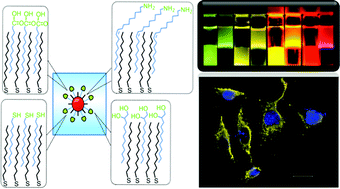Forming double layer-encapsulated quantum dots for bio-imaging and cell targeting
Abstract
We report a simple and effective approach for the preparation of double layer-encapsulated

* Corresponding authors
a
Department of Chemical Engineering, National Taiwan University of Science and Technology, Section 4, #43, Keelung Road, Taipei 106, Taiwan, ROC
E-mail:
jychang@mail.ntust.edu.tw
Fax: +886-2-27376644
Tel: +886-2-27303636
We report a simple and effective approach for the preparation of double layer-encapsulated

 Please wait while we load your content...
Something went wrong. Try again?
Please wait while we load your content...
Something went wrong. Try again?
M. Z. Fahmi and J. Chang, Nanoscale, 2013, 5, 1517 DOI: 10.1039/C2NR33429A
To request permission to reproduce material from this article, please go to the Copyright Clearance Center request page.
If you are an author contributing to an RSC publication, you do not need to request permission provided correct acknowledgement is given.
If you are the author of this article, you do not need to request permission to reproduce figures and diagrams provided correct acknowledgement is given. If you want to reproduce the whole article in a third-party publication (excluding your thesis/dissertation for which permission is not required) please go to the Copyright Clearance Center request page.
Read more about how to correctly acknowledge RSC content.
 Fetching data from CrossRef.
Fetching data from CrossRef.
This may take some time to load.
Loading related content
